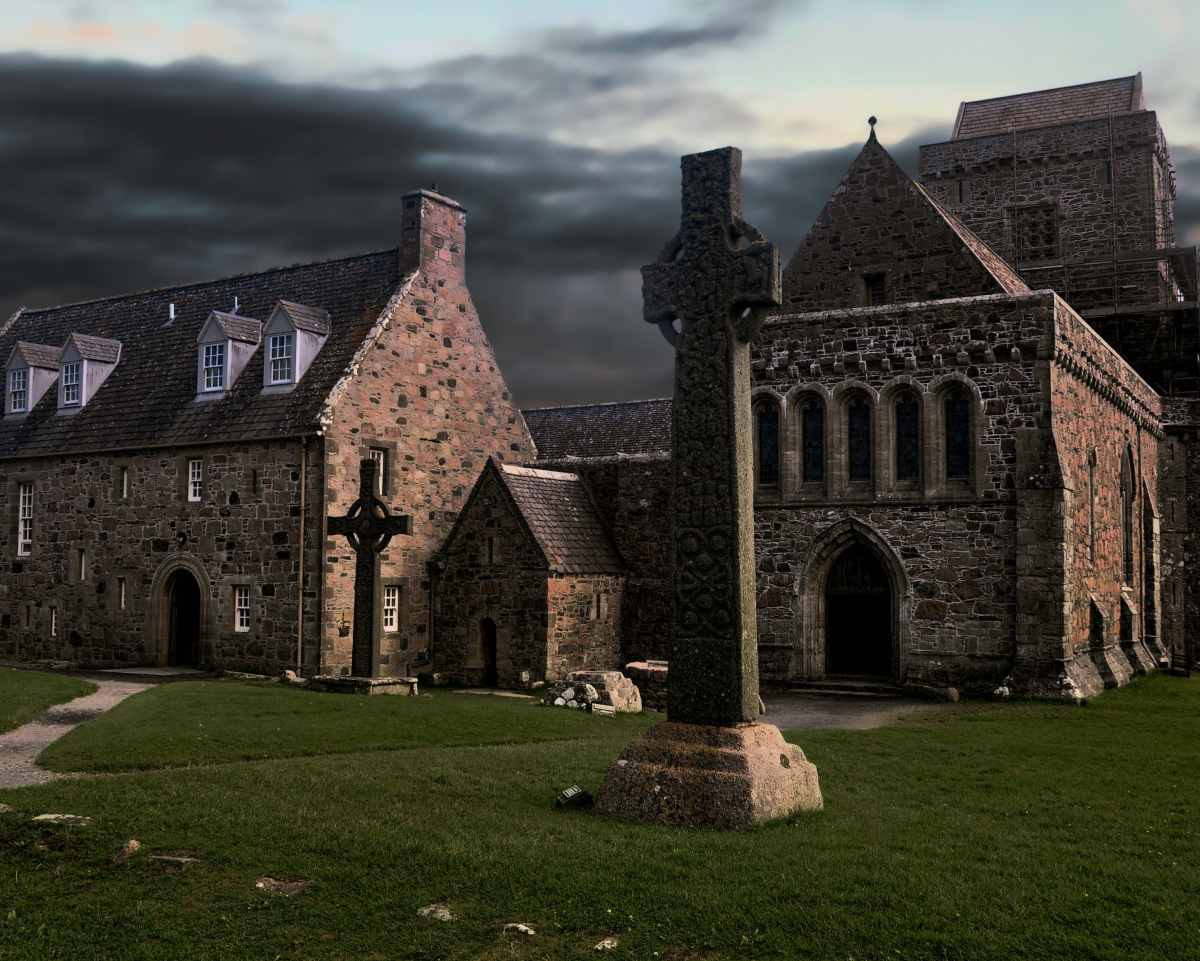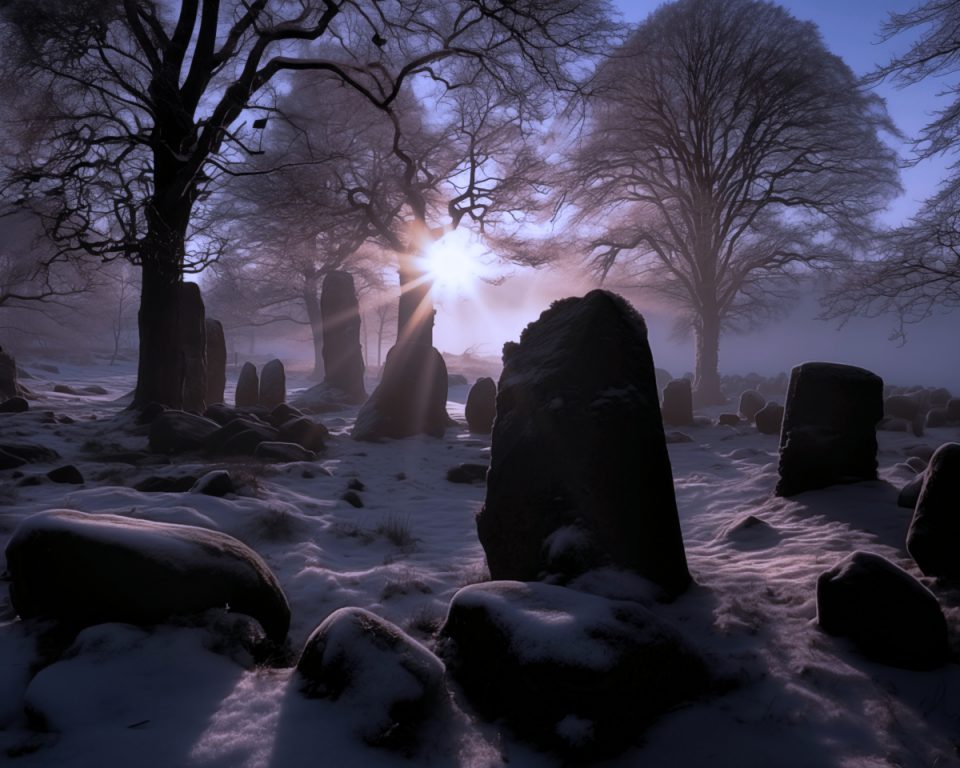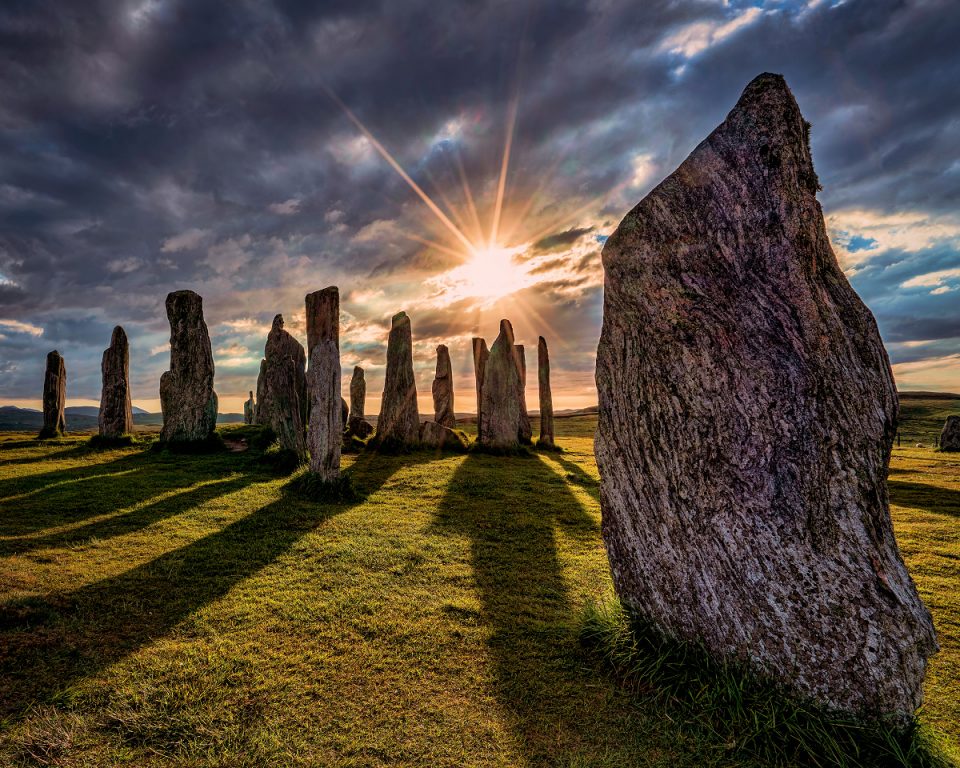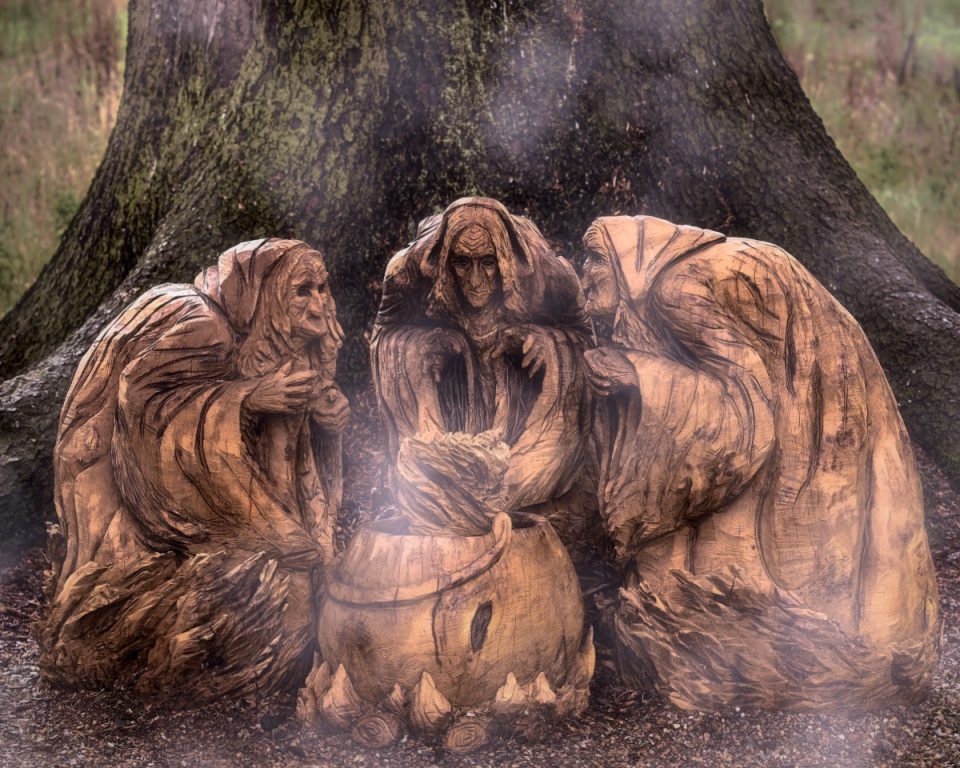The Feast Day of Saint Columba is celebrated on the 9th of June, on the anniversary of his death. In Gaelic, his name is Colum Cille which means ‘church dove’. But the princeling monk was not always the gentle servant of God: his zeal and thirst for learning sparked the first copyright dispute in history resulting in the death of some 3,000 warriors. Threatened with ex-communication and wracked with remorse for the trouble he had caused, Columba’s road to redemption occurred in Scotland where he would become the stuff of legends. Here he would become the founder of Iona Abbey, here he would begin an extensive missionary programme, here he would be credited with ‘taming’ the Loch Ness Monster and here he would walk the arduous path of piety which would one day earn him the title Saint.
Who was Saint Columba?
Columba was born on the 7th December 521 AD in Donegal, Ireland to Fedlimid and Eithnie of the powerful Clan Cenél Conaill and was the grandson of King Naill. It is said that he was the second great-grandson of Niall of the Nine Hostages. Some Irish sources claim that his birth name was Crimhann which means fox in Gaelic. As a boy, he was frequently found praying and soon earned the epithet Colum Cille.
Columba studied to become a monk under Saint Finnian in Glasnevin, Dublin and Saint Mobhi in Movilla, County Down. According to legend, around 545 AD Columba founded a monastery in Derry, high on a hill in the heart of what is now known as the Walled City.
Saint Columba and Battle of Cúl Dreimhne
Columba dedicated his life not only to God but also to books and manuscripts. He loved to copy verses from Bibles. The Saint is credited with composing some of the earliest non-classical Latin poems found in Europe. He noted many of the important events of the time, a habit which was later carried out in many of the monasteries he established. The earliest ‘annals’ were begun in the Saint’s Abbey in Iona and most of the early important documents in Britain and Ireland all come from Columban monasteries.
Alas, his love of books was to get him into serious trouble. He copied a book of psalms belonging to his old mentor Finnian with the intention of keeping it to himself. But Finnian disputed his right to keep the psalter. Finnian brought the issue before the High King Diarmait mac Cerbaill and the king ruled in favour of Saint Finnian, declaring, “To every cow its calf, to every book its copy.”
Columba’s kinsmen arose in his defence and a terrible battle, The Battle of Cúl Dreimhne, ensued. Three thousand warriors lost their lives as a result.
The Saint in Exile
Wracked with terrible guilt and anguish for the pain and violence he had caused and threatened with ex-communication, Columba sought penance for the deaths he had caused. He vowed that he would never look on the land of his birth again. In 563 AD he set sail with twelve followers and eventually landed on the white sandy shores of the Isle of Iona.
The founding of Iona
Lying off the west coast of the Isle of Mull the tiny Isle of Iona, barely three miles long by one mile across has had an influence out of all proportion to its size on the establishment of Christianity throughout Scotland, England and even to mainland Europe.
Ever zealous, Columba set about building Iona’s original abbey from clay and wood. This was not without some strange idiosyncrasies, including banishing women and cows from the island, claiming that “where there is a cow there is a woman, and where there is a woman there is mischief”. The poor abbey builders were forced to leave their wives and daughters on the nearby Eilean nam Ban (Woman’s Island). Stranger still, he is said to have banished frogs and snakes from Iona. Although, how he accomplished this feat is not as well documented.
Perhaps the strangest claim of all, however, is that the saint was prevented from completing the building of the original chapel until a living person had been buried in the foundations. His friend Oran volunteered for the task and was duly buried. Columba later requested that Oran’s face to be uncovered so he could bid a final farewell to his friend. When Oran’s face was uncovered, he was still alive but uttering such blasphemous descriptions of Heaven and Hell that Columba ordered that he be covered up immediately!
Columba’s Island Became the Burial Place of Kings
In time the Isle of Iona was to become a place of pilgrimage. Its reputation as a holy place spread across Europe. Forty-eight Kings of Scotland are buried here as well as four Irish Kings and eight Norwegian Kings. It is also said that King Ecgfrith, King of Bernicia was buried here after the Battle of Dun Nechtain.
Over the centuries the monks of Iona produced countless elaborate carvings, manuscripts and Celtic crosses. Indeed, the earliest Celtic cross is found on Iona. Perhaps the brothers’ greatest work was the exquisite Book of Kells, which dates from 800 AD and is currently on display in Trinity College, Dublin.
Columba and the Picts
Columba continued to live a humble life on Iona, studying and praying. His time was spent leading his community, establishing a network of missionaries and monasteries, and converting people to Christianity.
Perhaps his greatest challenge was faced as he ventured amongst the Picts. Two years after his arrival on Iona, he set off on a mission to the northern Picts. He and his companions travelled by boat, up the Great Glen. He was to meet King Bridei (An earlier king than Bridei of the Battle of Dun Nechtain Fame) at his Hill Fort at Craig Phadraig which is located just outside present-day Inverness.
Columba and King Bridei
King Bridei was King of the Fortui Picts. It has only recently been discovered through archaeological finds that the Fortrui came from Moray and the eastern Highlands of Scotland. Bridei it seems was not a man to be crossed. He had become ruler of all the Picts in 558 AD. Adomnan, Columba’s biographer records that the Pictish King had taken hostages to ensure the political submission of the sub-king of Orkney. It should be noted that the Picts are often dismissed as an uncivilised people. Yet their stone carvings are unparalleled for the era in which they lived. Not only were they great workers of stone but they were amazing smiths and Pictish jewellery is often intricate and detailed. Perhaps their stone carvings were to form the inspiration for Iona’s Celtic crosses.
Bridei was defiant. On Columba’s first visit to the king, he climbed up the steep path to the fortress only to discover that Bridei had barred the gates. Columba would not be defeated. He made the sign of the cross and went to knock on the door. Suddenly, by miraculous power, the bars were thrust back, and the doors quickly swung open of their own accord. Alarmed Bridei and his council left the hall and came to meet the man of God. They greeted Columba with due respect and welcomed him gently with words of peace. From that day onwards, Bridei treated Columba with great honour.
Columba and the Druids
Whatever respect Columba had won from the King, it was not felt by the King’s druids. No doubt they felt that their beliefs and therefore their power was threatened by this man who claimed that there was only one God.
On one occasion Columba and his brother monks were outside the King’s fort saying Vespers. Some of the Druids came out and tried to stop them. Apparently, they were afraid that the ‘heathen’ Picts ‘would hear the sound of God’s praise’ and be converted. Aware of this, Columba began to chant the forty-fourth psalm. At that moment, his voice was miraculously transformed and sounded like thunder. ‘The King and his people were filled with unbearable fear’ at the sound of his voice.
The Druid Briochan
On another occasion, St Columba asked a druid called Briochan to release an Irish slave girl. The druid was stubborn and determined not to do Columba’s bidding. Columba then made this chilling prediction, “Know this, Broichan. Know that if you will not free this captive exile before I leave Pictland, you will have very little time to live.” Columba then made his way to the River Ness, where he picked up a white pebble from the river. Turning to his to companions, he declared: ‘Mark this white stone through which the Lord will bring about the healing of many sick people among this heathen race.’
After a few minutes of silence, he went on, ‘Now Broichan has suffered a heavy blow. For an angel sent from heaven has struck him, breaking into fragments the glass cup in his hand just as he was drinking from it. He is now struggling to get his breath and is near to death. But we should wait here a little while. The king will send two messengers hurrying out to us to call on our help for Broichan, and urgently, for he is dying. This seizure has put fear into him. Now he is willing to release the slave-girl.’
The Healing Stone
The saint was still speaking when two of the king’s messengers arrived on horseback. ” The king and his household have sent us to you to call on your help for Broichan, who will soon die,” they pleaded. Columba sent two of his monks to the king, handing them the stone that he had blessed and insisted: ‘If Broichan will first promise to release the Irish girl, then and only then dip this stone in some water and let him drink it. He will be well again immediately. But if he is intransigent and refuses to release her, he will die on the spot.’
Within the hour the slave-girl was released and handed over to St Columba’s messengers. The stone was dipped in water, where, to everyone’s amazement it floated miraculously on the surface of the water like an apple. After Broichan drank from it, he recovered completely. Afterwards, the stone itself was kept in the royal treasury. Whenever it was put in water, it floated, and it was said to have healed many people. However, when someone’s allotted term of life was finished, the stone would mysteriously disappear. So it was that on the day King Bridei died the stone was sought but could not be found in the treasury.
Columba and a Battle of Wits with the Druid Briochan
Once Briochan asked Columba when he was about to set sail. Columba replied that they would leave in three days’ time. Briochan suddenly turned on the monk and declared that this would not be possible because he had the power to produce ‘an adverse wind and to bring down a thick fog.”
The day of their departure arrived, and a great gathering of people came to bid Columba and his holy companions farewell. The Druids were there too and feeling rather smug with themselves. A great mist had descended over Loch Ness. A stormy wind was brewing, blowing in the opposite direction from Columba’s intended route.
Although the other sailors were hesitant, Columba boarded the boat and ordered his men to hoist the sail into the wind. Immediately, to everyone’s wonder, the wind changed direction and all that day they enjoyed a gentle following breeze for their journey.
Columba and the Loch Ness Monster
Columba’s life was marked by many firsts in history, including the first recorded encounter with the Loch Ness Monster. While standing on the banks of the River Ness, which flows out of Loch Ness, Columba contemplated the best way to cross to the other side. However, his thoughts were disrupted by a group of distraught Picts who were burying a friend who had been attacked by a massive ‘water beast’ while swimming in the river.
However, Columba was not about to be dissuaded from crossing the river. On his command, one of his companions, Brother Lugne Mocumin, jumped into the river. He began to swim across with the object of bringing back a coble which was moored on the opposite side.
The onlookers stared ‘stupefied with terror’ as out of the depths surfaced the ferocious beast, its jaws wide open in anticipation of its next meal. It roared and headed towards the hapless Lugne. Meanwhile, Columba was nonplussed. Instead, he boldly stepped forward, making the sign of the cross. Invoking the name of the Lord, he commanded the beast, “Thou shalt go no further, nor touch the man; go back with all speed.”
Fearful, the monster fled. Lugne continued with his quest and soon returned with the boat. It is said that the monster has never attacked another human since that day.
The death of Saint Columba
Columba died when he was 77 years old, surrounded by his disciples on his beloved Iona. He died as he knelt before the altar to meditate prior to a midnight service.
His monks buried him within the monastic enclosure and there he lay peacefully for a hundred years. Then a new threat arose in the form of Viking raiders. They targeted churches and monasteries as they swept across the land in search of riches. To keep his relics safe, they were disinterred. Some of his bones were sent to the church of Downpatrick in Ireland. While others were kept in Scotland.
Columba and the Battle of Bannockburn
William I, King of Scots endowed Arbroath Abbey with the Monymusk Reliquary, a casket which held the relics of Saint Columba. It became a powerful symbol of nationhood and was carried before the Scots army as it marched into battle.
This reliquary is thought to be the Brechbennoch. This was carried by the Scots at the Battle of Bannockburn in 1314. Robert the Bruce himself believed that it provided the divine intervention which provided his victory over the army of King Edward II.
In 1933 it was bought by the nation and placed in the National Museum of Scotland.
Legacy
Meanwhile, Columba’s legacy lingers in Scotland. Many pilgrims visit the Isle of Iona. Columba was to become the patron saint of Derry, in Ireland. He might even have become the patron of Scotland, but that honour was ultimately bestowed upon Saint Andrew.




